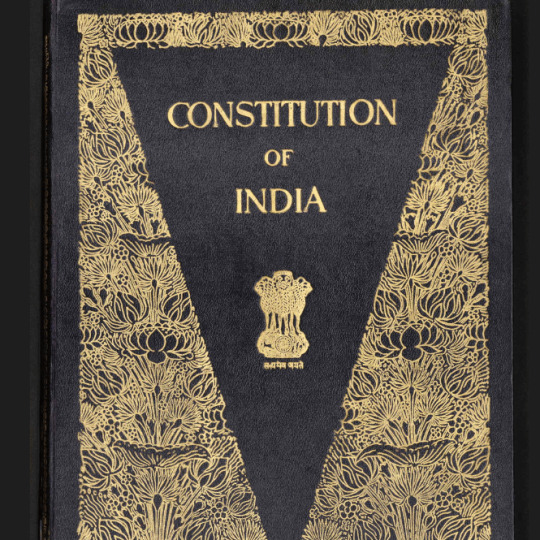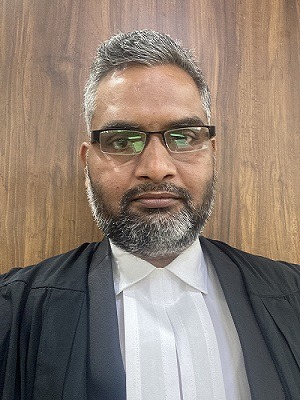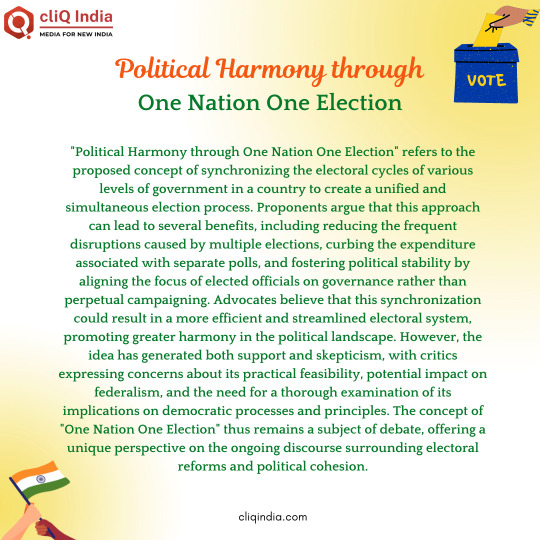#Indian law
Text
Indians on tumblr!!!!! I just found out something and i want to know yall's thoughts. I need to know if I'm the only one thinking about this, and im NOT going to mention this to my family. Help a girl out pls lovelies <333
So at the dinner table today, my dad said the government was making it mandatory to register live-in relationships now, and that not registering your relationship could result in a 6-month jail penalty or something. And at first I was like huh - they're trying to police us again, huh - but then stopped to think, and decided to research instead.
Now, this here is a Times of India article from a few hours ago.✨
In short, the Uttarakhand CM tabled the Uniform Civil Code (UCC) bill in the Uttarakhand assembly this morning. And one part from the 192-page bill is devoted to looking at live-in relationships as a legal entity. The bill was approved on Sunday, and tabled today.
And this made me SO HAPPY, because FINALLY. We're finally making some progress as a society. The Indian law has taken the first step in recognising two people living together without getting married, yet reaping the legal benefits - an unmarried partner will be a legal entity, legally counting as a loved one (provided they are over 21). Moreover, a couple that's living together but not married can legally have kids, and not face any discrimination in the eyes of the law. And not only that, but in case of a break-up (which also needs to be procedurally filed with the authorities), the woman is entitled to maintenance. I quote from the article:
CM Dhami said, “It is a historic moment for each one of us. Let us all have a lengthy and healthy discussion to bring uniformity in the society.”
This is wonderful! It's such a progressive measure.
But what caught my eye was the final paragraph from the article.
Leader of opposition Yashpal Arya said, "We fail to understand the logic behind the urgency being shown by the BJP government. They expect us to read such a lengthy document speedily and start the discussion. It looks like the government is trying to hide something."
At first that seemed like a classic political counterattack, but it got me thinking. Why indeed the urgency?
And then I realised - what if - what if - it is now legalised for queer couples in Uttarakhand to register live-on relationships and basically reap all the benefits of a legally recognised marriage? They haven't explicitly mentioned the queer community anywhere, but it's possible, right? We know the Supreme Court refused to give marriage rights to non-heterosexual couples last year (see here); but if this is presented as an option to queer couples instead, they can secure all the rights of a traditional marriage with a different kind of registration? It is, after all, not illegal to get into long-term homosexual relationships. I know it isn't perfect, but if they allow homosexual live-in relationships, then it's at least a step in the right direction?
I'm not very well-versed with this, so I'm turning to the only relatively safe space I can think of - desis on tumblr. Is it possible that this could happen, that queer relationship recognition could be an ulterior agenda? Is it really as progressive as I think it is? I'm curious, and so hopeful! Any and all discussion is welcome - what do y'all think?🫶
P.S. let me know if there are any more tags I should add for this to reach more people!
#jaate jaate keh gayi#desi#desiblr#india#indian academia#indian#queer#gender#queer community#queer pride#pride#gay#lesbian#politics#india politics#indian politics#law#legal system#indian law#krishnablr#gopiblr#krishna
31 notes
·
View notes
Text
Fake Indian art still a major problem despite federal responsibilities
Criminal pleas surface amid vague ‘Indigenous’ claims
Tuesday, March 14, 2023
By Acee Agoyo, Indianz.Com
Efforts to strengthen the Indian Arts and Crafts Act are gaining new steam as government authorities try to enforce a law aimed at addressing fraud and exploitation of Native cultures and ways of life. On Monday, the Democratic chairman of the Senate Committee on Indian Affairs unveiled a discussion draft bill called the Amendments to Respect Traditional Indigenous Skill and Talent Act of 2023. Also known as the ARTIST Act [PDF], the proposed legislation seeks to protect the arts, crafts, goods and other creative works that American Indian, Alaska Native and Native Hawaiian people have produced since time immemorial.
“The ARTIST Act would update the Indian Arts and Crafts Act to support creative economies and strengthen enforcement of current law and protections against counterfeit competition for Native artists and their works,” the committee said in a news release on behalf of Sen. Brian Schatz (D-Hawaii), the chair of the legislative panel. “This discussion draft reflects direct stakeholder input as well as years of committee oversight and broad commitment to the protection of Native cultural patrimony and revitalization of Indigenous languages,” the release continued.
As enacted in 1990, the Indian Arts and Crafts Act makes it a crime to market, sell or promote an item as “Indian” unless it was created by a citizen of a state or federally recognized tribe or by an artisan certified by a tribe. The law was written to prevent the historical and ongoing misrepresentation of Native arts by non-Native entities. Yet Native artists and their advocates have long complained about the lack of enforcement as fakes and frauds have continued to flood the market and undermine an important source of income in Native communities across the United States.
It’s an issue that Secretary Deb Haaland, who is the first Native person to lead the Department of the Interior, has recognized as a major problem. “Native art is a critical part in telling the story of this country and can only be told by Native artists,” Haaland said in a video message after making history as the first Native person in a presidential cabinet. “Buying authentic pottery, jewelry, mixed-media creations, paintings and other art from Native American artists helps support tribal economies.” “Unfortunately forgery and copies hinder the positive economic opportunities available to Native artists and their families,” said Haaland, who is a citizen of the Pueblo of Laguna.
youtube
The law was updated in 2000 and in 2010 to strengthen enforcement. But as fraudulent works continue to be sold in some of the largest art markets in the U.S., the ARTIST Act builds on prior efforts by broadly expanding the ways in which federal officers can investigate suspected violations. Federal officers, for instance, would be authorized to make arrests, engage in searches and even conduct seizures for suspected violations of the Indian Arts and Crafts Act.
They would also be able to inspect shipments coming into the U.S. to ensure compliance with the law, according to provisions of the draft. And for the first time, Native Hawaiians would gain protections for their creative works. The ARTIST Act modifies existing definitions in federal law to ensure that the original inhabitants of Hawaii aren’t left out of enforcement efforts that are available to American Indian and Alaska Native artisans.
To help pay for these enforcement measures, the ARTIST Act authorizes ways in which people suspected of violating the law can have their property forfeited and be required to shoulder the costs of investigations through fines and penalties. A new Indian Arts and Crafts Forfeiture Fund would be established to assist the work of the Department of the Interior.
The draft discussion bill also requires visible and permanent labeling of items that come into the U.S. from Canada or Mexico. Anything that could “possibly be mistaken for, arts and crafts made by Native Americans” must be “indelibly marked with the country of origin,” according to provisions of the the ARTIST Act.
Finally, the ARTIST Act would require trainings of federal law enforcement officers, not only on the Indian Arts and Crafts Act but on the recently-enacted Safeguard Tribal Objects of Patrimony Act, also known as the STOP Act. The latter law makes it a crime to export tribal cultural property, another issue that has threatened Native cultures and ways of life. “For too long, the export and sale of sacred and culturally significant items from Native peoples in Hawaiʻi, Alaska, and across Indian Country has deprived these communities of their own history and heritage,” Schatz said after the measure was passed and signed into law during the prior session of Congress. “Our bill will help stop the black market trafficking of these items and bring them home.”
Just this month alone, federal authorities announced the resolution of three cases in which the Indian Arts and Crafts Act was violated. In all three instances, non-Natives created and sold fraudulent art by misrepresenting, falsifying and lying about their non-existent tribal backgrounds. In Washington, 52-year-old Lewis Anthony Rath and 67-year-old Jerry Chris Van Dyke, also known as Jerry Witten, pleaded guilty on March 1 to breaking the law.
Both men admitted that they sold fake “Indian” goods in the historic Pike Place Market in Seattle, one of the most heavily trafficked tourist areas in the city. “When non-Native artists falsely claim Indian heritage, they can take sales away from true Indian artists working to support themselves with skills and techniques handed down for generations,” Nick Brown, the U.S. Attorney for the Western District of Washington, said in a news release. “Stores and galleries need to partner with artists to ensure those artisans and craftsmen advertised as Indian Artists truly have tribal status,” Brown added, offering advice to businesses to ensure they comply with the law.
Rath falsely claimed to belong to the San Carlos Apache Tribe — while producing items that mimicked the Pacific Northwest tribal cultures that are hundreds of miles from his supposed Native homeland in Arizona. According to federal authorities, the goods were sold at the Raven’s Nest Treasure and the Ye Olde Curiosity Shop, both of which represented to customers that Rath was Native. And when agents from the U.S. Fish and Wildlife Service, which is part of the Department of the Interior, searched Rath’s home and studio, they found feathers from protected birds — including ones from golden eagles. He pleaded guilty to unlawful possession of these items in addition to violating the Indian Arts and Crafts Act.
Meanwhile, Van Dyke falsely claimed to be from the Nez Perce Tribe and was selling goods that he claimed were of Alaska Native origin — again far away from his supposed tribal background in Idaho. According to federal authorities, he produced the items using materials that were supplied to him by the non-Native owner of a gallery in Pike Place.
“Van Dyke had worked with the gallery for more than ten years, with the gallery owner providing him with woolly mammoth ivory, antlers, animal bones and fossilized walrus ivory to make the pendants that it sold,” the U.S. Attorney’s Office for the Western District of Washington said in the March 1 news release. A day later in Texas, the U.S. Attorney for the Western District announced the sentencing of Kevin Charles Kowalis, 60, for violating the law. According to federal authorities, he falsely marketed and sold jewelry online that he claimed were of “Zuni” and “Navajo” origin even though he does not belong to either tribal nation.
“Fraud can come in many forms but always carries the intent to deceive a victim,” U.S. Attorney Jaime Esparza of the Western District of Texas said in a news release. “Offenders like this defendant victimize both our cherished Native American community and consumers who believe they’re collecting authentic pieces of Native American culture. We will not stand idle while someone takes advantage of our citizens and our federal resources.” Kowalis will serve five years probation for his crime and was ordered to forfeit his inventory, pay a special assessment and pay restitution to a victimized artist from the Pueblo of Zuni.
The total amount appears to be relatively low — less than $1,500, according to court records. No fines were ordered due to his “inability to pay,” the criminal judgment reads. “This sentencing is important in the fight to end this type of fraud,” said Assistant Director Edward J. Grace of the U.S Fish and Wildlife Service’s Office of Law Enforcement. “Our dedicated team of special agents works on behalf of the Department of the Interior and the Indian Arts and Crafts Board to protect American Indian and Alaska Native artists and the consumers who purchase authentic Native American art and craftwork.”
Over in Washington, Rath and Van Dyke are due to be sentenced on May 17. As part of a plea agreement, federal prosecutors said they won’t seek prison time for Van Dyke. Rath did not obtain any promises regarding sentencing in his plea agreement. A federal judge, though, will make the final determination on punishments for both individuals.
“The Indian Arts and Crafts Board (IACB) is very pleased that Jerry Chris Van Dyke and Anthony Rath have been brought to justice for their roles in selling fake Indian artwork in violation of the Indian Arts and Crafts Act,” said Director Meridith Stanton, the leader of the IACB, which is part of the Department of the Interior. “Cases like these are critical to preserving the integrity and viability of authentic Native American art and craftwork in general, as well as preserving the rich cultural heritage of the Nez Perce Tribe and the San Carlos Apache Tribe and the economic livelihoods of their artists and craftspeople,” said Stanton.
The IACB helps look into potential violations of the Indian Arts and Crafts Act, offering examples of possible wrongdoing. But the board’s website notes that items that are marketed or portrayed as “Native American style” or “Native American inspired” can be sold without violating the law — so long as there is “qualified labeling” available to the consumer.
The draft discussion of the ARTIST Act maintains the legality of these categories of “Native American-style jewelry” and “Native American-style arts and crafts” but requires that such items be “indelibly marked” or labeled in a “permanent” fashion, to ensure the consumer is aware that they are not produced by an American Indian, Alaska Native or Native Hawaiian artist.
And while the title of the ARTIST Act contains the word “Indigenous,” the proposed bill does not contain any definitions of a term that has become increasingly used by people who are creating, marketing and selling art that they claim is Native in origin.
An example just emerged in New York, where a self-described activist opened an exhibit in February that appropriates numerous elements of Native culture even after admitting to Indianz.Com that they do not belong to any tribal community. The exhibition, located at a small gallery in the Upper East Side of New York City, notably incorporates the red imagery that Native women developed and brought to prominence to raise awareness to their missing and murdered sisters and relatives. It also includes a visual representation of a Native quilted blanket — albeit with the word “PRETENDIAN” stitched into it.
The Soul of Nations Foundation has prominently marketed the installation as “Indigenous” in origin, a designation that has prompted some Native people to consider reporting it to the Indian Arts and Crafts Board for possible violations of the Indian Artist and Crafts Act. In fact, the non-profit’s executive director and founding member, Ernest Hill, contacted Indianz.Com numerous times in advance of the opening on February 24, soliciting news coverage for an individual who removed all references to their supposed tribal affiliation over a year ago.
Yet Hill, whose parents served as religious missionaries to the Navajo Nation and to other reservations, has since refused to answer questions about the exhibition — including inquiries about the artist’s supposed tribal background.
Materials that Soul of Nations produced for the installation claim it is directed to “Indian Country” but the organization has repeatedly refused to respond to inquiries about the use of the designation in connection with someone who admitted they lack ties to any tribal community. Hill and Soul of Nations also have refused to clarify the source of funding for the project.
In press materials, they proudly assert that the installation has received “support” from the Department of State. On social media, Hill and Soul of Nations gave a different story. In response to a prominent Native environmental leader who has repeatedly attempted to hold the self-described activist accountable for the false claims of tribal belonging, they claimed that “no outside funding was provided for this exhibition.”
When asked to explain the discrepancy between the press materials and the social media post regarding their claim of receiving federal support, Hill and the Soul of Nations refused to respond. The organization started blocking Native users on social media and began restricting interactions on one of its accounts after questions were raised about the installation. The Soul of Nations website, incidentally, includes a prominent reference to the “Senate Committee on Indian Affairs” on a page that has been used to solicit monetary donations. The Department of State is also listed in the same section of the site.
Since the opening of the installation last month, the self-described “Indigenous” individual has posted on social media about being on “Day 371” of a “cancel” and a ‘call out” that has purportedly kept them “jobless.” The number of days is counted from the February 25, 2022, story on Indianz.Com that reported on their their non-existent tribal affiliations. The next post on the private account was about the installation, which opened to the public a year following publication of the story. The user has since deleted hundreds of posts about their supposed tribal background from the account, whose name is a variation of an anti-LGBTQ slur.
The Senate Committee on Indian Affairs is accepting comments about the Amendments to Respect Traditional Indigenous Skill and Talent (ARTIST) Act of 2023 until April 14. Comments can be sent to [email protected].
#art#native american#indigenous#indigenous artists#native news#scams#frauds#us politics#us government#indian law#native art#indigenous art#native artists#current events#Youtube
69 notes
·
View notes
Text
Here’s the rub. Most Western-centric judges are blinded not only to culturally embedded aspects of Native American land relationships but also to myths at the root of Indian Law. According to the law that judges are to apply, obliteration does not equal coercion. This is pious anarchy of the sort. It is an unknowing and uncaring avenue of the jurists, and it is more inexcusable than an incompetent understanding of Native American religious necessities.
Bob Hershey at Turtle Talk. Guest Post: Bob Hershey on Contemporary Attacks on Sacred Sites
KILLERS OF THE FLOWER MOON IS A STUDY IN GENOCIDAL VILLANY: THE UNITED STATES CONTEMPORARY WAR ON NATIVE AMERICAN SACRED SITES CONTINUES THE RAMPAGES OF THAT ERA.
14 notes
·
View notes
Text
🚀 Excited to share my latest article
5 notes
·
View notes
Text
Mutual Divorce Lawyer in India
Divorce is an increasingly common phenomenon in India, with couples ending their marriages for various reasons. Divorce process in India is governed by several laws and understanding the intricacies of these laws is essential for a person seeking a divorce.
In India, the primary law governing divorce is the Hindu Marriage Act 1955. This law applies to persons belonging to the Hindu, Buddhist, Jain or Sikh religions. The law provides for certain grounds on which divorce may be sought, such as adultery, separation, mental disorder, contagious and incurable form of leprosy, failure to marry, conversion to another religion, and cruelty. There is also a provision in the law that a court can dissolve a marriage by mutual divorce.

In addition to the Indian Marriage Act, certain persons are also subject to the Indian Divorce Act, 1869 and the Parsi Marriage and Divorce Act, 1936. These statutes define the grounds on which a person can apply for divorce; however, the grounds provided in these laws are more limited than those provided in the Hindu Marriage Act. In addition to the various laws, the person seeking a divorce must be aware of the process. The main steps in the process include filing a petition with a court of competent jurisdiction, providing notice to the other party, and then participating in a hearing and mediation. The court will then decide on the divorce and the parties can begin to negotiate a settlement. Depending on the reasons for the divorce, it can last from six months to several years.
Generally, Indian divorce laws provide a framework for individuals who wish to end their marriage. It is important for a person to know the process and the applicable laws as this can help them make informed decisions.
3 notes
·
View notes
Text
Reminder that forced/coerced marriage (any marriage either party is unwilling to enter) is illegal in India. Even if relatives threaten that they can do it, its not legal. You have options to avoid it.
#desiblr#This isnt abt consensual arranged marriage that is legal ofc#but if you are forced into a marriage its not only unethical but also illegal.#Obviously for ppl in such a situation its up to you#But threats of marriage are basically empty as per law.#A forced marriage is also a grounds for nullification if one or both spouses were coerced or didnt want the marriage#legislature#I say this as someone who had fears about this for so long.#Its not legal to begin with. If anyone like relatives are threatening you with coerced marriage or marriage you don't want#Its not a threat they can legally carry out#Ofc honor killings and other shit are still a thing. But its important to know that coerced marriage is illegal and you are well within you#Rights to file complaints if you are or were coerced or state that its illegal#coerced marriage#tw coerced marriage#tw forced marriage#indian law#forced marriage#That last tag is full of whump or whatever nonsense bc I guess white ppl from america have the privilege of#Never having to worry abt this shit irl so they just write fic abt it
14 notes
·
View notes
Text
Article 20 of the Indian Constitution: Safeguarding the Rights of Individuals
Introduction
Article 20 of the Indian Constitution is a crucial provision that plays a significant role in safeguarding the fundamental rights of individuals. It embodies the principles of justice and fairness by ensuring protection against certain actions that may infringe upon the personal liberty of citizens. This article provides safeguards that are vital for upholding the principles of a…

View On WordPress
#Article 20 of Indian Constitution#Constitution of India#Constitution Studies#Constitutional Insights#Fundamental Rights#Indian Constitution Explained#Indian Law#Indian Legal System#Legal Education#Legal Rights
2 notes
·
View notes
Photo

UP JUDICIAL MAINS SPECIAL PROGRAM 2023 We have a world-class portal to facilitate real-time exam analysis with the latest technologies to help you understand your shortcomings. We provide Test-Series of all the law exams. & Admission will be closing soon, Hurry up only a few seats are left. For registration call mentioned numbers -099908 98327 OR 099908 98348 Our team is waiting for your reply.#uppcsj #judiciarymains #judiciarymainsexam #pcsjudiciary #upjudiciary #lawyers #judiciarycoaching #justice #judiciary #pcsjudiciary #judiciarycoaching #BombayHighCourt #universityoflaw #judiciarypreparation #lawstudents #lawcollegestudent #indianjudiciary #judiciaryexams #LawNews #law #lawcollege #lawyer #supremecourtofindia #amitylawschool #judiciaryexam
#uppcsj#Indian Judiciary#pcsj#judiciary#Judgement#law news#law preparation#lawexam#law professor#lawsuit#law and legal system#indian law#law
3 notes
·
View notes
Text
Under the Medical Termination of Pregnancy Act (Indian abortion laws) we need to consult a physician depending on the duration of the pregnancy (1st 12 weeks 1 physician, next 12 weeks 2 physicians etc). Earlier MTP was only for 20 weeks but now has been extended for 24 weeks (in some cases the upper ceiling limit has been taken off) & some restrictions have been lifted. [For a detailed timeline of the restrictions lifted & conditions needed to be met, check this doc]
But it is still restrictive- a woman can get an abortion if she is a victim of rape, minor, incest, fetus has abnormalities or fetus poses a danger to the mother's life. A woman's own choice is not enough to guarantee her an abortion. Despite amendments since the last decade it still gives doctors the final say, not women. To say that abortion is legal is also not technically correct:
The Indian Penal Code, 1860 (IPC) makes abortion ('induced miscarriage') a criminal offence under Section 312. The MTP Act is the exception to this law. The law safeguards registered medical practitioners by laying down certain conditions under which they can terminate the pregnancy.
Moreover, the MTP Act specifically states pregnant "women", hence making abortion services inaccessible to transgender persons, genderqueer and gender non-conforming, as well as others of gender diverse identity who do not identify as women.
Abortion though covered by govt national health funds, isn't free; safe abortion is expensive & its often practiced illegally. Unsafe abortions cause 13% of maternal deaths. Plus societal taboos factor too. But these are still somewhat overall good laws.
This article by livelaw gives an easy and detailed explanation of MTP (1971 & 2021) and will help you know more about your reproductive rights bcz knowing your rights gives you power to demand for better healthcare.
Some form of safe abortion available is better than none.
#abortion laws#roe vs. wade#indian law#reproductive rights#reproductive choice#india#your rights#reblog
2 notes
·
View notes
Quote
Wildlife officials said that despite an uptick in the number of exotic animals being brought into the country as pets, there was still no effective legislation to monitor the trade. In 1976, India adopted the Convention of International Trade in Endangered Species (CITIES), an agreement ratified by 183 countries, which protects and monitors the trade of endangered plants and animals. But the country has still not given the multilateral treaty any teeth - it can't be implemented under Indian law. Lawmakers are reviewing an amendment to India's Wildlife Protection Act which would bring exotic flora and fauna, and other species protected by CITES provisions under wildlife authorities.
Andrew Clarance, ‘Why are kangaroos being spotted in India?’, BBC
#BBC#Andrew Clarance#India#Wildlife officials#exotic animals#wildlife smuggling#wildlife trade#Convention of International Trade in Endangered Species#CITES#trade of endangered plants and animals#Indian law#1972 Wildlife Protection Act#exotic flora and fauna#wildlife authorities
4 notes
·
View notes
Text
Which Lawyer Wins Most Cases?

Introduction
Winning cases in the Supreme Court of India requires unparalleled expertise, strategic thinking, and a profound understanding of the law. One name that stands out in this high-stakes arena is Advocate Narender Singh. Known for his remarkable track record and dedication to his clients, Advocate Singh has established himself as one of the most successful Lawyer For Supreme Court of India.
Understanding the Role of a Supreme Court Lawyer
What Does a Supreme Court Lawyer Do?
A Supreme Court lawyer handles complex and significant legal matters that require resolution at the highest level of the judiciary. These cases often involve constitutional issues, landmark legal principles, and significant public interest.
Importance of Experience and Expertise
Experience and expertise are crucial for a Supreme Court lawyer. Navigating the intricacies of the legal system, presenting compelling arguments, and influencing judicial interpretations demand years of practice and a deep understanding of legal precedents.
Who is Advocate Narender Singh?
Background and Education
Advocate Narender Singh’s journey to becoming a leading Supreme Court lawyer began with his rigorous academic background. He graduated with honors from one of India’s premier law schools, where he distinguished himself with his keen legal acumen and dedication.
Career Milestones
Throughout his career, Advocate Singh has achieved numerous milestones. He has represented high-profile clients, argued complex cases, and consistently delivered favorable outcomes, cementing his reputation in the legal community.
Areas of Specialization
Advocate Singh specializes in constitutional law, civil litigation, and criminal defense. His versatility allows him to tackle a wide range of legal issues, providing comprehensive legal solutions to his clients.
Achievements of Advocate Narender Singh
Notable Cases Won
Advocate Singh has an impressive portfolio of cases won. His ability to present persuasive arguments and his deep understanding of the law have led to numerous victories in the Supreme Court.
Landmark Judgments
Several landmark judgments bear Advocate Singh’s name. These judgments have not only benefited his clients but have also contributed significantly to the development of Indian jurisprudence.
Contributions to Legal Precedents

Conclusion
Advocate Narender Singh’s impressive track record, deep legal knowledge, and commitment to his clients make him one of the most successful Best Criminal Lawyer for supreme court of India. His achievements not only benefit his clients but also contribute to the broader legal landscape. If you’re seeking a lawyer who consistently wins cases and upholds the highest standards of legal practice, Advocate Narender Singh is an excellent choice.
Name: Advocate Narender Singh
Phone No: 9811338667
Address: Cabin №05, Consultation Room, Ground Floor, C.K Daftary Chamber Block, (Near Gate No.D of Supreme Court of India) New Delhi 110001
#law#lawyers#legal#india#indian law#lawyer#supreme court lawyers#advocate#legal services#advocate for supreme court of india#Lawyer for supreme court of India#Delhi#new delhi
0 notes
Text
#advocate men#free legal advice#online lawyer consultation#online legal help#law firm#indian law#lawyer#legal service
0 notes
Text
In adopting the Indian Child Welfare Act, Congress exercised that lawful authority to secure the right of Indian parents to raise their families as they please; the right of Indian children to grow in their culture; and the right of Indian communities to resist fading into the twilight of history. All of that is in keeping with the Constitution’s original design.
Justice Neil Grosuch quoted by Kate Fort at Turtle Talk. A Quick Brackeen Opinion Post
8 notes
·
View notes
Text

Elevate democracy, embrace efficiency! Discover the path to Political Harmony through One Nation One Election. A bold step towards a unified future.
#one nation one election debate#one nation one election#one nation one election pros and cons#What is One Nation One Election#one nation one election essay#Indian Election#Indian Politics#Indian Law#Indian Democracy
1 note
·
View note
Text
Why Divorce Can Be a New Beginning to Happiness
Divorce Lawyer in Greater Noida can redefine their relationship if there is still any relationship between them. After a breakup, partners can become friends or spouses, which can still be beneficial for both parties. By redefining their relationship, they can still support each other and stay connected while respecting each other's boundaries.

2 notes
·
View notes
Text
Environmental Laws in India: An Overview
Introduction
The evolution of environmental jurisprudence in India has been a remarkable journey, marked by significant milestones and groundbreaking judgments. From the early days of environmental awareness to the current era of environmental activism, the Indian legal system has played a crucial role in shaping the country's approach to environmental protection.
The Early Days of Environmental Awareness: A Shift in Perspective
Environmental consciousness in India emerged in the early 20th century, when concerns over deforestation and wildlife conservation began to gain public attention. This newfound awareness led to the enactment of the first environmental legislation in India, the Indian Forest Act of 1927, which aimed to regulate forest management and protect wildlife.
The Post-Independence Era: A New Legal Framework for Environmental Protection
In the post-independence era, India's environmental jurisprudence underwent significant transformation. The Constitution of India, adopted in 1950, included provisions that emphasized the importance of environmental protection. Article 48A, introduced in 1976, explicitly states that "The State shall endeavor to protect and improve the environment and to safeguard the forests and wildlife of the country."
The Rise of Environmental Litigation: A Force for Change
The 1970s and 1980s witnessed a surge in environmental litigation in India, as public interest groups and activists challenged the government and industries for their environmental transgressions. Landmark cases such as the Ganga River pollution case and the Bhopal gas tragedy brought environmental issues to the forefront of public discourse and highlighted the need for stricter environmental regulations.
The Emergence of New Environmental Principles: Embracing Sustainable Development
The 1990s and 2000s saw the emergence of new environmental principles in Indian jurisprudence, such as the precautionary principle, the polluter-pays principle, and the concept of sustainable development. These principles guided the courts in their decisions, leading to a more comprehensive and holistic approach to environmental protection.
The Significance of Environmental Jurisprudence in Protecting the Environment
The evolution of environmental jurisprudence in India has had a profound impact on the country's efforts to protect the environment. By providing a legal framework for environmental protection, empowering citizens to raise environmental concerns, and establishing new environmental principles, the courts have played a vital role in safeguarding India's natural heritage.
Conclusion
The evolution of environmental jurisprudence in India is a continuous process, adapting to the ever-changing environmental challenges. As India continues to grapple with issues such as air pollution, water pollution, and climate change, the role of the legal system in protecting the environment remains more crucial than ever.
#snrlaw#legal services#indian law firm#indian law firms#indian law#law firms in india#indian lawyers#law practice areas
0 notes